The U.S. really is a nation of immigrants
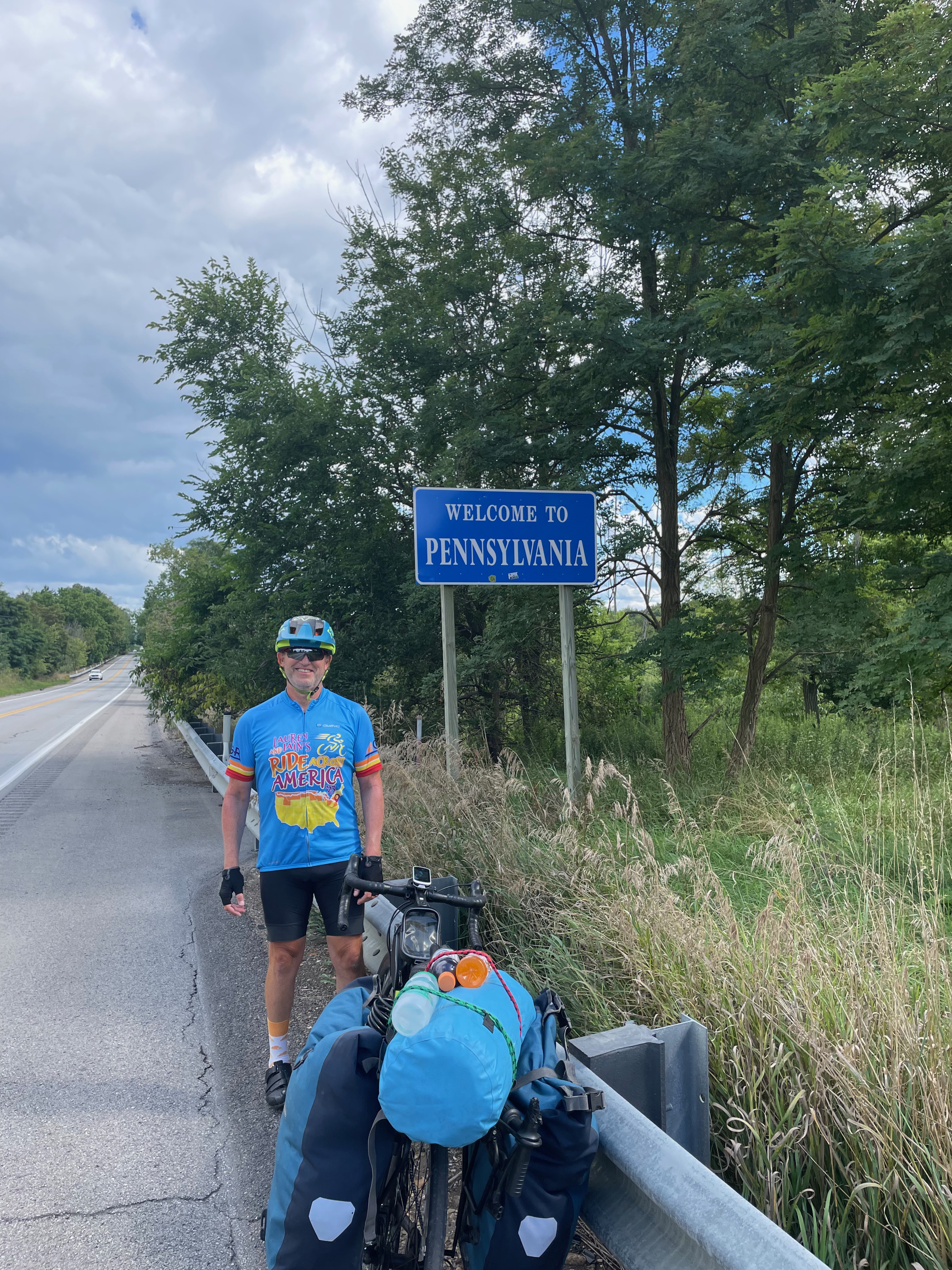
- Day 37, August 12th: 85 miles
- Day 38, August 13th: 90 miles
- Day 39, August 14th: 60 miles
- Day 40, August 15th: 74 miles
- Total: 2,672 miles
August 16, 2023 | We are now in Pennsylvania, about 30 miles north of Pittsburgh, having taken only three days to cross Ohio. Roads in the Buckeye state were great and it was very flat right until the southeastern end. We had a day of rain but also stayed with some friends and a great couple we met through Warm Showers. We have good memories of Ohio.
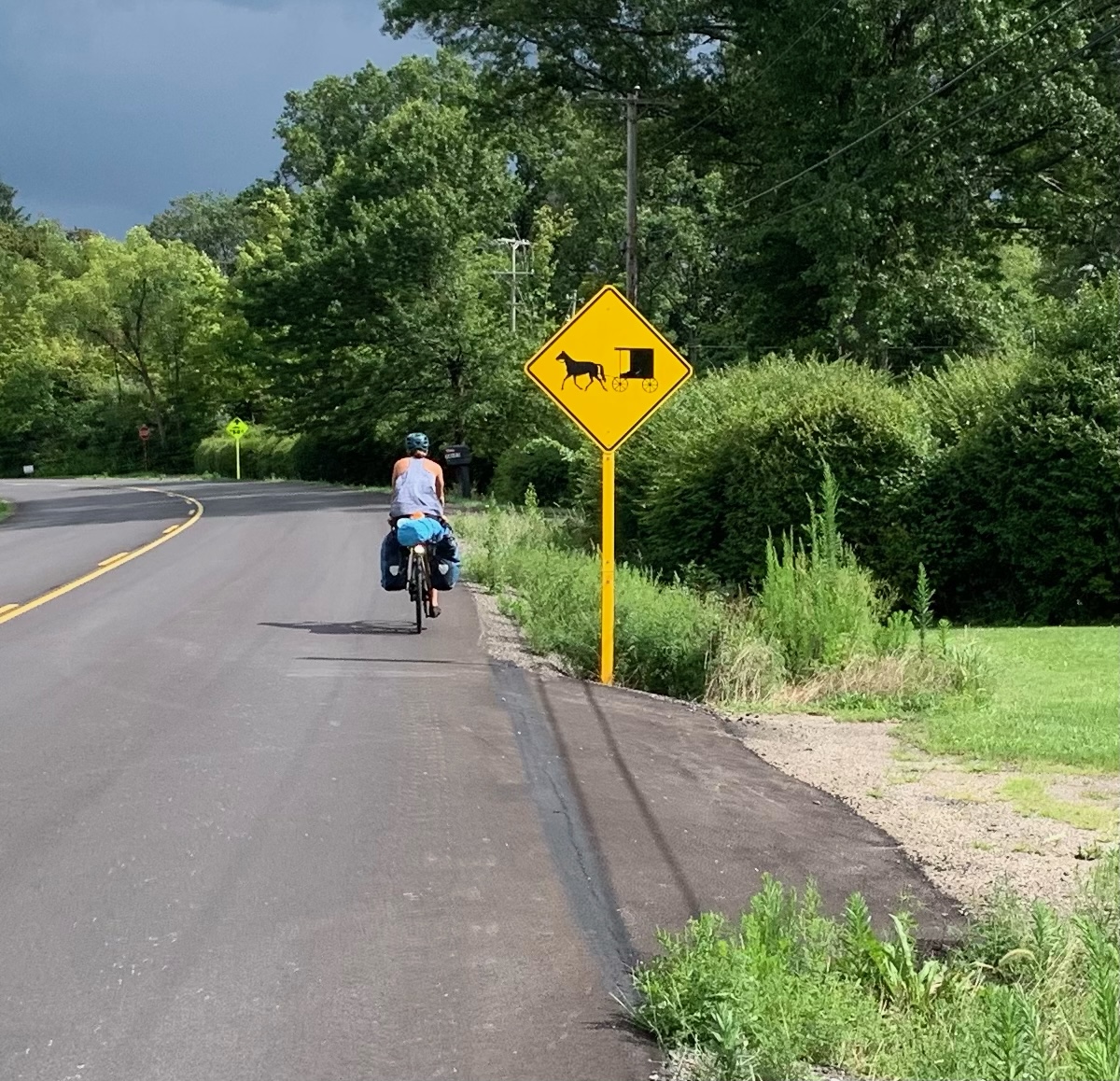
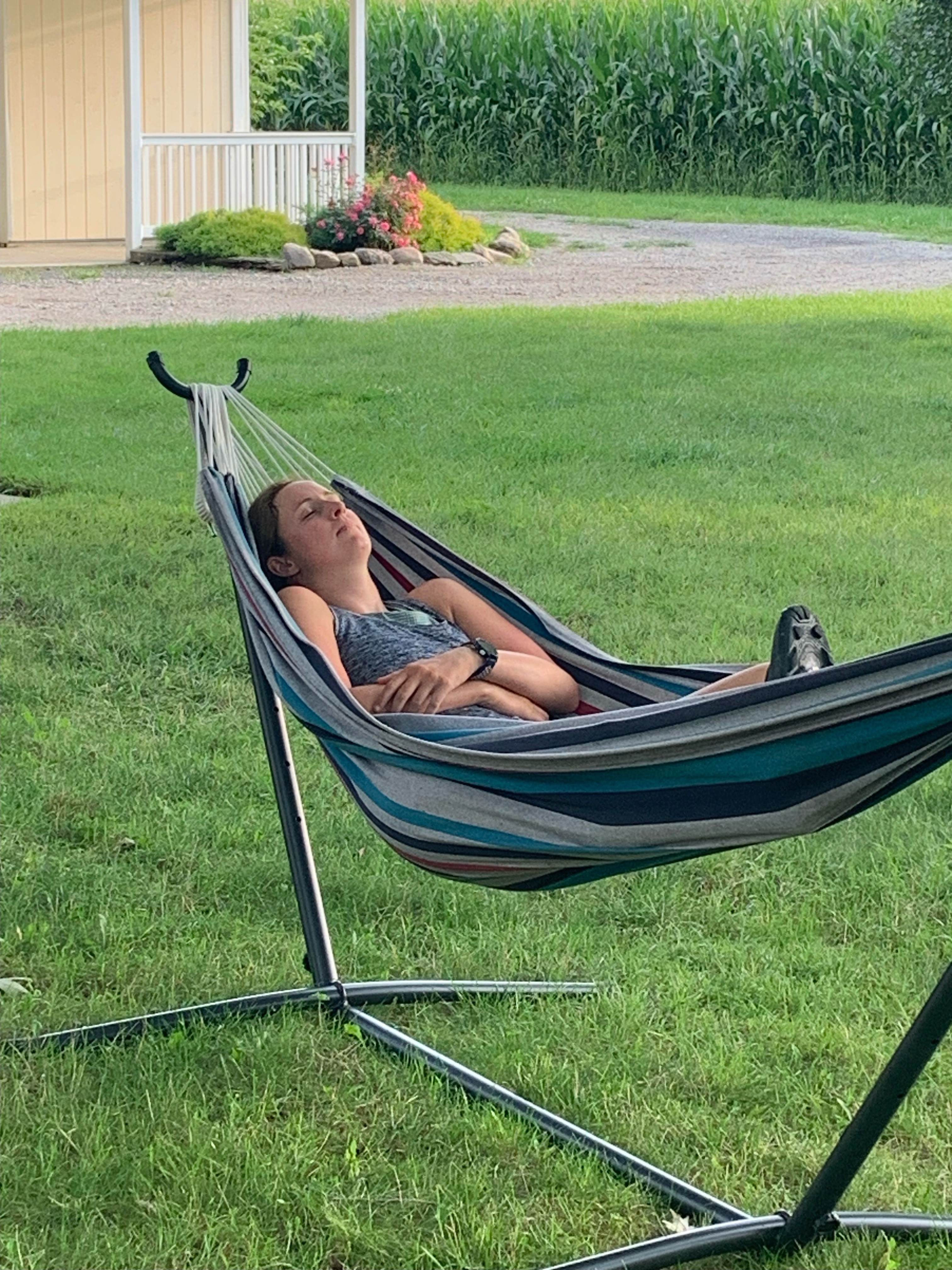
The plan tomorrow is to ride to Pittsburgh and then join the GAP – the Great Allegany Passage – which is an old rail line that in theory will take us to the C&O towpath right into D.C. We will see what the condition of the trail is like; some parts are not paved and it may be too muddy. Either way, we are getting closer to D.C. every day.
On a ride like this, you get to see a lot of places and talk to a lot of people. You see more from a bike than you do from a car and certainly far more than from a plane. All those ‘fly over’ states the people who live on the coasts talk about? We have seen many of them up close and in person! It is often said that the U.S. is a nation of immigrants (me included). Certainly the modern U.S. was formed by immigration from the late 1700s until the present day.
On the ride, you can see that immigration in the names of towns, farms, local businesses, roads, and highways: Polish, Czech, German, Dutch, Italian, French, Irish, Scottish, English and more. It is easy to forget that this migration is in fact very recent, mainly in the last two hundred years.
Prior to the Erie Canal opening in 1825, connecting the Hudson River to Lake Erie, it was difficult and expensive to move goods and people to western Pennsylvania and Ohio, never mind Michigan. At this time, the main form of transportation was by waterways; no railroads went to the west at this time and of course there were no roads. Plus the Appalachian Mountains split Ohio from the eastern states.
I have mentioned Lewis & Clark before in these blogs. In fact, one of the main goals of the Lewis & Clark expedition in 1804 was to find a navigable route along the Missouri River to the west coast to open up the western half of the U.S.
Once the Erie Canal opened, people quickly moved west and started settling in the new mid-western states. In fact, the construction costs of the canal were covered by the tolls generated in the first year. Construction was mainly by Irish immigrants and many stayed in the communities as they built the canal. Genealogists have traced families along the canal route.
Railways started to be built about 1830 but were limited to the east. The Baltimore & Ohio Railroad (which the GAP follows) did not reach Ohio until after the Civil War. And the Northern Pacific Railroad did not expand past Bismarck, ND until after 1880. So rivers and canals were the main form of transportation through the middle of the 19th century.
The expansion west was driven by, and enabled, immigration from across Europe. People left for many reasons: famine, poverty, war, religious persecution, economic opportunity, and simply for the adventure. But it is the personal stories we have heard on this trip, more than anything, that illustrate how the U.S. was built.
- Remember Grandma Angela in Jackson, MI? She is 84 and her father was originally from Italy. He came over to the U.S. just after World War I, passed through Ellis Island and then headed up to work at the Alcoa plant in Massena, NY (up on the St. Lawrence seaway). He had heard from other Italian immigrants that he was guaranteed a job at the plant, plus there was a large Italian community there. Angela met her husband in Massena and then moved to Jackson, MI, in 1966.
- Remember I mentioned the Assumption Abbey in Richardton, ND, where we stayed one night? Father Odo gave us a tour of the abbey and church and told us the history. The church was built in 1896 by the Volga-German immigrants who had immigrated from what is now Ukraine. Back in the 1760s, Catherine the Great ruled Russia (she was German by birth) and wanted more German influence in the region. So they encouraged Germans to move to Russia, allowing them to keep their language and culture, giving them free land and making them free of conscription. But by the late 1800s, Russia needed more army recruits, so the Tsar removed the conscription immunity. Entire families and villages therefore picked up and emigrated to the U.S. They moved west along the new railroads looking for farming land. As the railroad expanded west from Bismarck, they founded new towns and villages and, of course, built churches and abbeys. Assumption Abbey was founded by Germans in this way.
- The final story shows how small the world really is. Remember we stayed in Medora, ND (by Theodore Roosevelt National Park)? Well, at the hotel I was swimming and sitting in the hot tub, loosening up my tired legs, and got talking to a doctor from Georgia. He had grown up on a ranch near Medora and was back to see family. He asked where I was from in the U.K. and I said ’Nottingham’. He started laughing. Turns out his step-grandfather was from Nottingham. The grandfather's father was a miner and a drunk. One night, the father came home from the pub and started fighting with his wife, and the 14-year-old son picked up a chair and hit him. The mother said ‘you better leave. Now!’. So the son went to Liverpool (somehow), got passage on a boat to the U.S., road freight cars out west and ended up in Medora, ND. This was all in the early 1900s. There, he found work as a ranch hand and eventually married the doctor’s grandmother and went on to have a family of his own. The step grandfather did not see any of his original Nottingham family until he was 84, 70 years later.

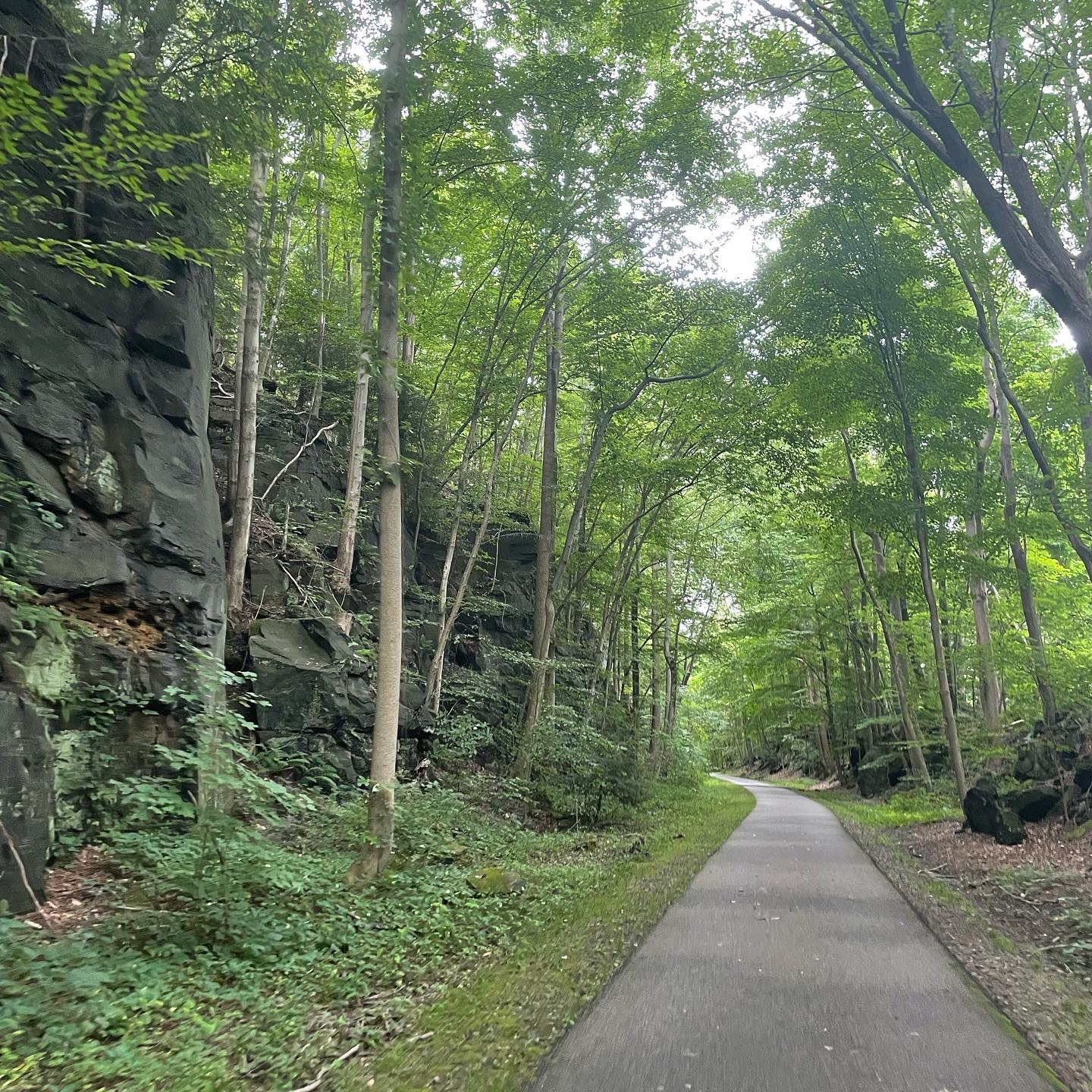
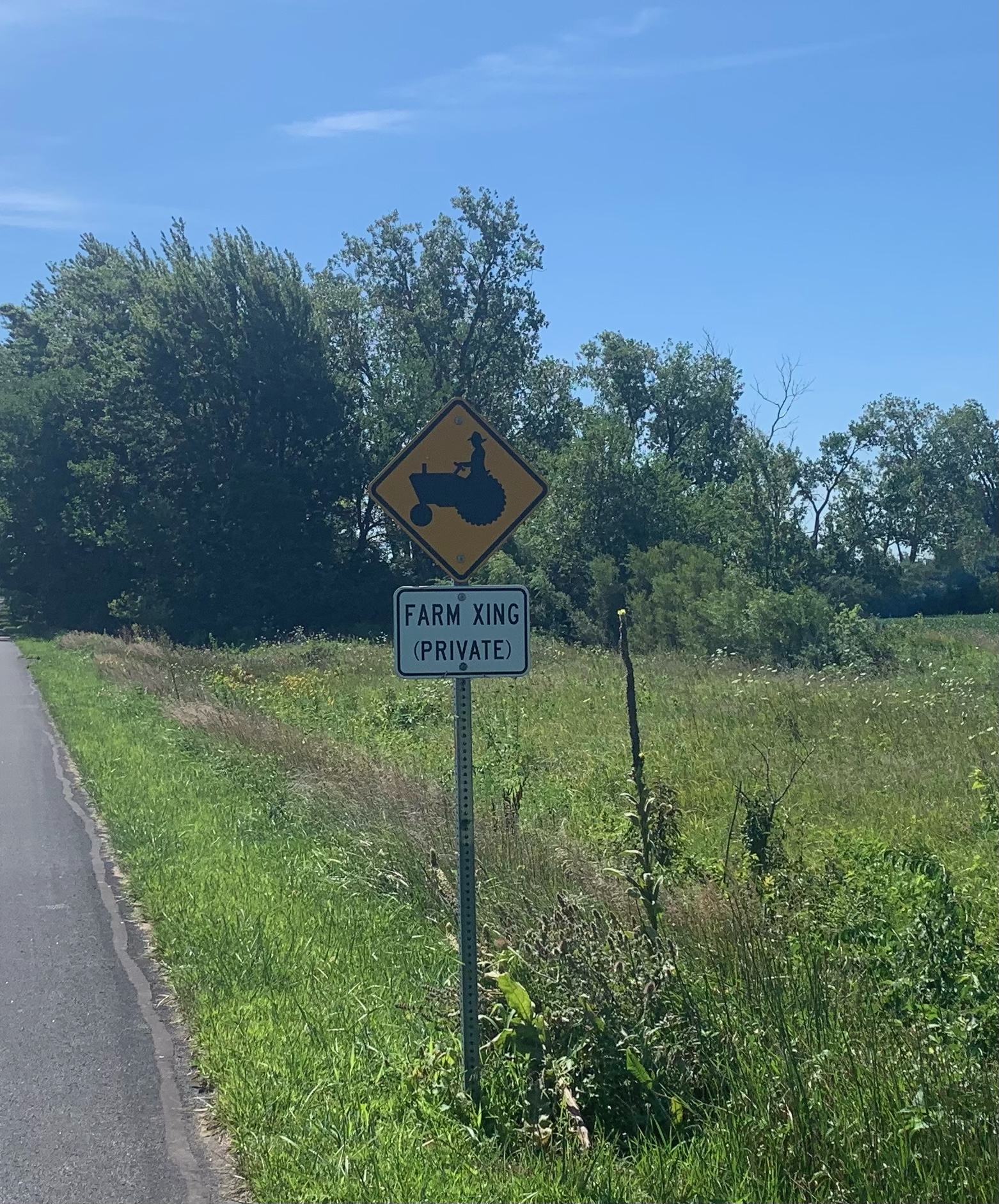
Our Latest Research
- U.S. 5G Revenues, 2023-2028: How much and where are mobile consumers spending?
- U.S. Mobile Data Forecast, 2023 – 2028: Onward upward
- U.S. Mobile Connections Forecast, 2023-2028: 5G dominance
- U.S. Mobile Network Infrastructure Spending Forecast, 2022-2027: 5G network...
- U.S. Mobile Consumers and 5G: Awareness and Interest
- U.S. Mobile Broadband Use by Time of Day: 2019, 2021, 2022 and 2023
by Graphite Design
